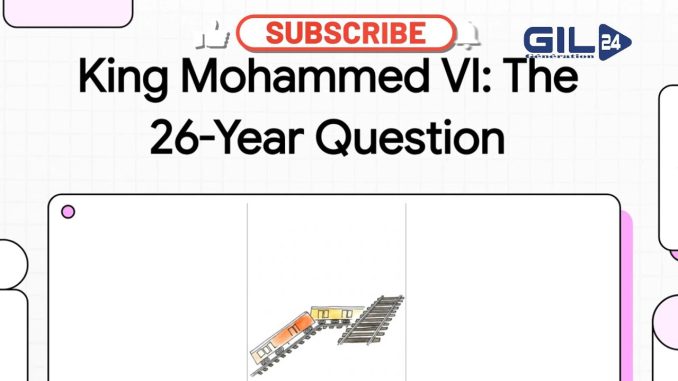
This report provides an overview of the 26-year reign of Morocco’s King Mohammed VI, exploring its initial promise, significant achievements, and the complex challenges that define its later stages.
Early Reign: A New Style of Monarchy and Significant Reforms
• A Candid and Human Approach: King Mohammed VI began his reign with a refreshing openness, publicly acknowledging his flaws and sharing lessons learned from his father, King Hassan II. He emphasized a consultative, team-based work style, moving away from the image of a solitary ruler. This early approach aimed to signal a new, more personal leadership style while simultaneously reassuring the nation that the core principles of the monarchy would remain intact.
• Breaking with Tradition: His initial statements were quickly followed by actions that marked a significant break from decades of tradition. These changes were not minor adjustments but ranged from the deeply symbolic to the profoundly political.
◦ Ending the Seclusion of the Royal Spouse: A symbolic yet significant shift was ending the tradition of keeping the royal spouse entirely hidden from public view.
◦ Confronting the « Years of Lead »: The king confronted the painful period of state repression under his father, known as the « Years of Lead ». A powerful example of his early approach to reconciliation involved televised hearings for victims: when faced with the dilemma of large portraits of the kings in the testimony room, Mohammed VI gave the green light to cover both his and his father’s portraits, allowing the nation to begin healing.
◦ Reforming Government Structure: His early reign also included reforms to the very structure of the government.
Later Reign: Achievements and Deep-Seated Problems
• Contradictory Outcomes: After more than a quarter-century on the throne, Mohammed VI’s reign is characterized by two distinct and often contradictory narratives. This contradiction highlights a core paradox in modern Morocco.
• Visible Achievements: On one hand, there have been significant and visible achievements, including:
◦ The development of high-speed rail.
◦ The construction of massive new ports.
◦ Major diplomatic wins on the international stage.
• Persistent Social Problems and Inequality: Conversely, Morocco continues to face deep and unresolved social problems. These include:
◦ Challenges in healthcare.
◦ Issues in education.
◦ A particularly stubborn problem of unemployment, which contributes to widespread inequality.
The Central Dilemma: Hollowing Out of Institutions
• The King as Sole Initiator: A fundamental problem has emerged over time: while the king has solidified his role as the primary driver of national projects, the country’s political landscape has experienced a « hollowing out » of intermediary institutions.
• Weakened Intermediaries: Political parties, unions, and the press have all been weakened, leaving very few credible partners to act as go-betweens between the monarchy and the people.
• Questions of Institutional Health: This situation means the king often becomes the sole initiator of major projects, raising critical questions about Morocco’s long-term institutional health.
• The Monarchy’s Purpose: As captured by political scientist Muhammad Tazi, the ultimate goal of the monarchy is not short-term political wins but ensuring the long-term stability and survival of the institution and, by extension, the entire nation. It is described as a daily job of protection.
Conclusion: A Call for Further Reform
The monarch who initially surprised many with his bold reforms now presides over a political climate that many observers believe is in desperate need of further major reform. The question remains whether the king will deliver one more surprise, shaping the final chapter of his rule.

Soyez le premier à commenter